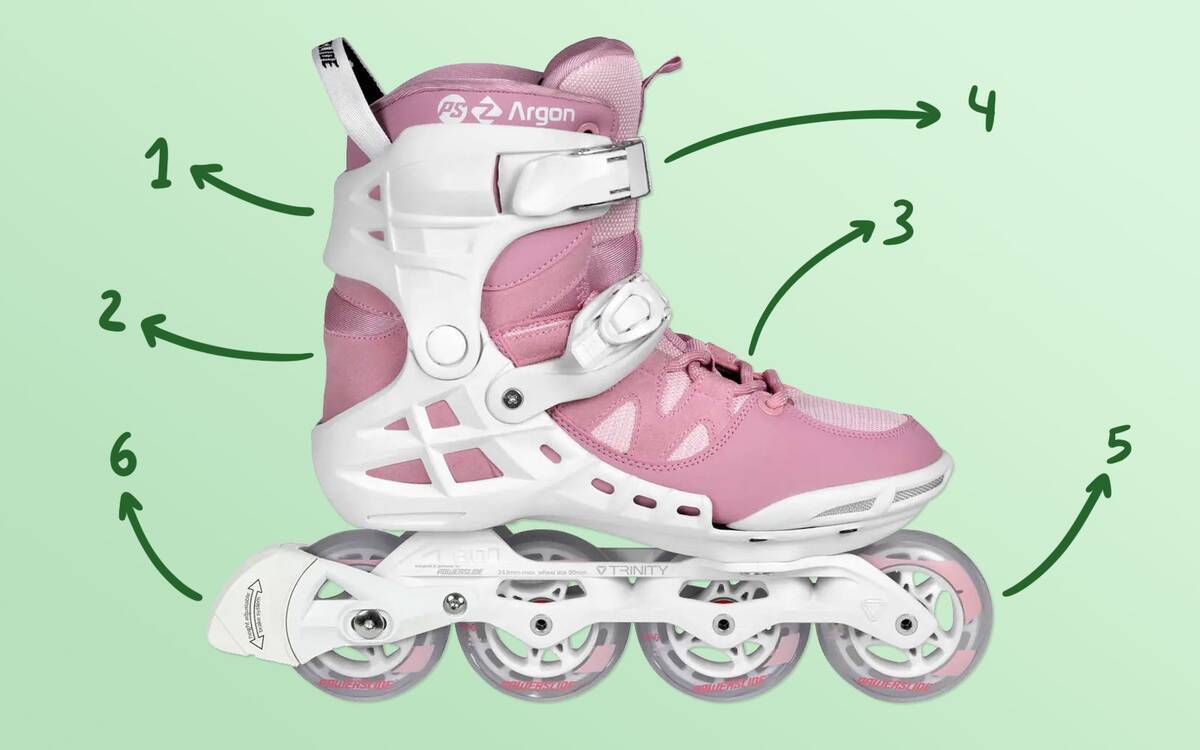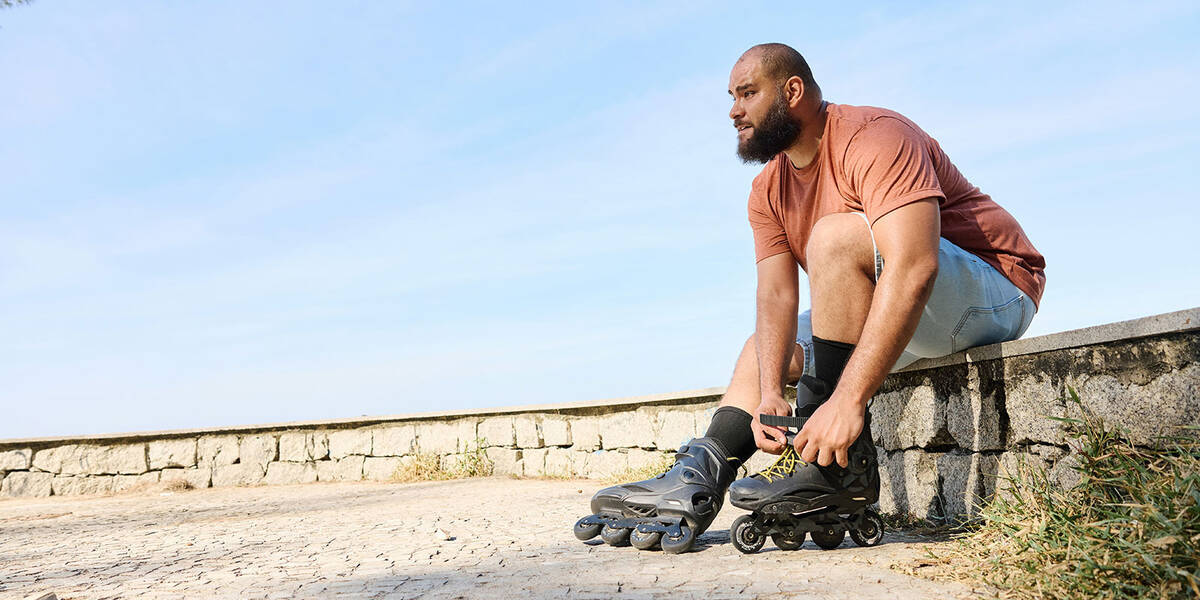Choosing the Optimal Inline Skates for Novices
When looking for the ideal inline skates for those new to skating, it's crucial to select a pair that provides comfort and reliability, ensuring an enjoyable skating experience. To assist you in exploring the numerous choices available when picking your first inline skates, we have compiled informative advice in this guide. Here, you'll find all the necessary information to choose the best beginner inline skates.
In our range of inline skates, you'll find a vast selection of superb options designed specifically for beginners. Skates suitable for beginners are often classified as recreational or fitness inline skates. These categories usually indicate that the skates are meant for general use rather than specialised pursuits like speed skating or aggressive skating. Perfect for commuting, exercising, and leisurely enjoyment, they combine performance with comfort effectively.
Overview
Which are the Top Inline Skates for Newcomers?

Consider these features when selecting beginner inline skates to ensure they deliver both performance and comfort:
- High cuffs for side support: Offers stability and ankle support.
- Ventilated liners with foam: Provides comfort and airflow during use.
- Various lacing systems: Options like traditional laces, speed lacing, or BOA systems for a secure fit.
- Powerstrap and buckle: Ensures your foot stays securely in place.
- Small wheels (up to 90 mm in diameter): Fitted for beginners for improved control and steering.
- Heel brake: Allows for safe speed management and stopping.
In our array of inline skates, you'll observe that beginner-friendly models cater to all ages and tastes. When you delve into one of our inline skate categories, it's advised to filter outcomes by skill level.
How to Determine the Correct Size for Beginner Inline Skates

Selecting the correct size skates is vital for embarking on your new journey on wheels. When purchasing skates online, adhere to the size guide for the specific model you're considering and select your skates based on precise foot measurements.
To measure your foot accurately, begin by placing your heel against a wall. Then, measure from the wall to the tip of your longest toe, ensuring it's measured at a right angle from the wall.
precise foot measurement methods
- Utilise a hard, flat surface: Stand with your back to the wall on a solid, flat surface for precise measurements.
- Wear your skating socks: Measure your feet while wearing the socks you plan to skate in.
- Position a sheet of paper against a wall: Place paper on the floor with one edge against the wall.
- Stand upright: Stand straight with your heel against the wall and flat foot on the paper.
- Mark the longest toe: Mark the paper at the tip of your longest toe.
- Measure both feet: Measure both feet since one foot may be marginally larger. Use the larger measurement when selecting your skate size.
Use a ruler to note the length of your foot on the paper. You've now identified your mondopoint size, which you'll use when referring to inline skate size charts.
How Should Inline Skates Fit Properly?

Inline skates should fit snugly yet not uncomfortably. If they aren't tight enough, it can impede the energy transfer from your legs to the skates. Consider these factors when trying on your first pair:
- Break-In Period: Skates generally have a break-in period. Initially, they might feel stiff but should ease up after a few uses.
- Heel Lock: Your heel needs to sit snugly in the heel cup with minimal lift while skating. A secure heel lock aids in control and reduces blister risks.
- Space for Toes: Toes should be near the front of the skates, but not cramped. There should be slight room for wiggling the toes.
- Ankle Support: The ankle should feel supported and secure, without cutting off circulation. You should be able to bend knees comfortably without undue pressure on ankles.
- Closure Systems: Adjust laces, buckles, and straps for a secure fit. Skates should be tight enough to support but still allow proper blood flow.
Breaking In Your Inline Skates
As a beginner, having your feet encased in skates is a new sensation. Even perfectly fitting skates will require a break-in period and for beginners, the skin on feet, ankles, and shins needs to build resistance.
Here are some tips to ease this period:
- Be Patient: Skates may need up to a month to break in. Begin with shorter sessions, then lengthen them. Some initial discomfort is expected as your feet and ankles adjust.
- Relax Your Feet: Focus on relaxing feet while skating and avoid overtightening laces or straps.
- Prevent Blisters: Experiment with different socks to find the most comfortable for skating. Insoles can help, and footies can substantially reduce blister formation, especially around heels and ankles.
If persistent pain or discomfort ensues, seek advice from a medical professional. Appreciate the process as your skates adapt to fit your feet and skating style adequately.
For more insights, read our article about insoles, footies, and breaking in new skates:
What is the Correct Way to Brake on Beginner Inline Skates?
Novice inline skates are outfitted with heel brakes, often positioned at the back. This setup is advantageous as the braking technique with a heel brake is more intuitive for beginners still mastering their skates. Essentially, a conventional heel brake offers a simpler, safer braking option, providing a significant benefit for novices.
What Safety Gear is Essential for Beginner Inline Skaters?

It's vital to wear safety gear while inline skating, especially for beginners. Here's a list of protective gear you should have:
- Helmet: A properly fitting helmet is essential for safeguarding your head from severe injuries.
- Wrist Guards: Wrist guards offer support and cushioning to help prevent wrist injuries in case of falls.
- Knee Pads: Knee pads shield against scrapes, bruises, and potential fractures.
- Elbow Pads: Utilise elbow pads for protection against impacts and abrasions.
Wearing this protective equipment minimises injury risk, making inline skating a safer and more enjoyable experience.
Donning protective gear is pivotal for enjoying inline skating safely. It's recommended that all novices invest in protective gear.

